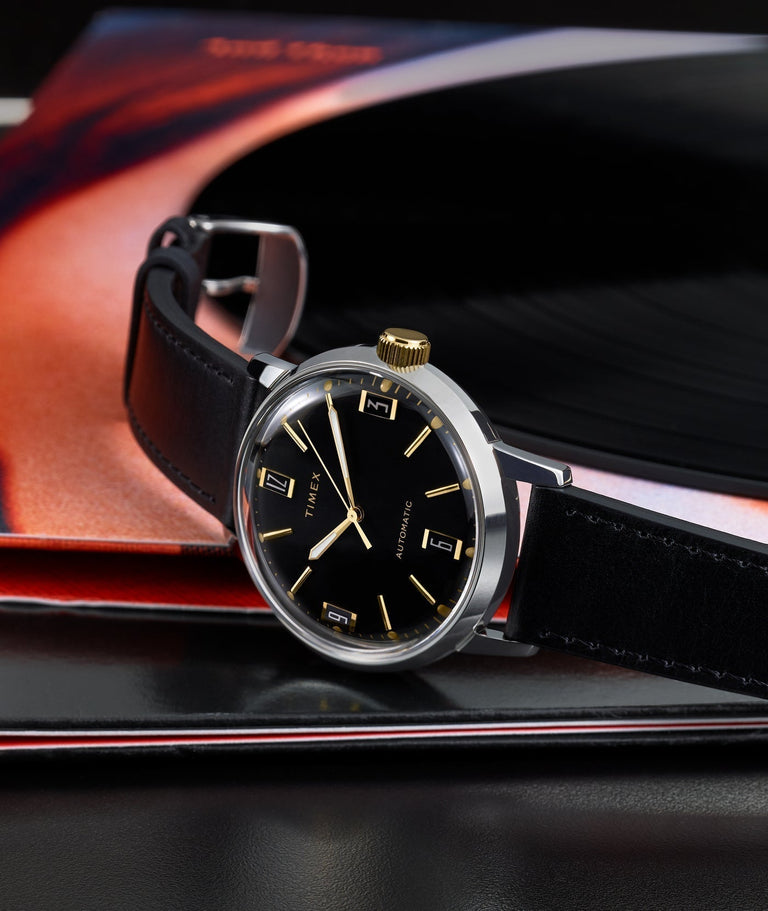When you hear someone talking about the movement of a watch, they’re referring to the mechanism that makes the hands move. The movement is the engine that power your timepiece and it’s much more than a simple matter of terminology. Learning about the difference between the two main types of watch movements is a great way to learn how your watch works.
Mechanical vs Quartz watches
There are two primary systems for powering watches. One uses batteries or a source of light (also known as a quartz watch thanks to the quartz crystal that regulates the timekeeping) and the other uses a spring – that’s a mechanical mechanism.


What Are Mechanical Watches?
Mechanical watches are the oldest type of watches. They work by using the momentum created by the tension of a spring slowly unwinding to drive a series of toothed cogs to power the wheels that control the hands and allow them to move forward a small amount. This is what causes the hands to rotate around the dial and make that iconic 'ticking' sound.
There are two sub-categories of mechanical watches – hand-wound and automatic. These sub-sets both use a mainspring to power the series of cogs and wheels within the case, but obtain that power from different sources. Hand-wound watches rely on you manually winding the crown while automatic watches use the movement of your arm to stay wound.
Want to learn more? We go into more detail about mechanical watches in our What Is a Mechanical Watch? guide.
Why don’t mechanical watches need batteries?
Mechanical watches don’t need batteries because they get their power from the tension in the mainspring. The internal mechanisms rely on the mainspring to keep the parts moving and keep you on time, rather than using power from batteries.
What are Hand-wound Watches?
Hand-wound watches are exactly what they sound like – they are mechanical watches that need to be wound by hand to work. The energy that the mainspring receives from winding powers the mechanisms inside the watch and rotates the hands around the dial at the correct speeds. You use the crown on the side of the watch to manually wind up the mainspring each day – most people do this as part of their morning routine. Over time, as the tension in the mainspring dissipates, your watch can slow down and “lose” time which is why regular winding (and avoiding overwinding) is important.

What Are Automatic Watches?
You might be thinking that an automatic watch is the opposite of a mechanical watch – such as a digital watch – but you’d be incorrect. An automatic watch is actually still a type of mechanical watch. But, where mechanical watches are traditionally wound by hand, an automatic watch instead winds itself through a bit of clever engineering. A piece called the rotor uses the movement of your arm to wind the mainspring as you go about your day and keeps your watch ticking. Some people also call automatic watches “self-wound” watches because they appear to wind themselves.
We have more information about automatic watches, including how they work in more detail, on our Automatic Watches guide.
Automatic vs Hand-Wound
The ultimate decision of whether you opt for an automatic or hand-wound watch really comes down to personal preference. When choosing between an automatic or hand-wound watch, there are a few considerations to factor into your decision including accuracy, maintenance, and convenience to name a few.
Automatic
Many of Timex’s Marlin®, Expedition®, and M79 timepieces are automatic watches. Our expertise and precise designs mean you get the best mechanisms in a stylish watch that keeps up no matter where life takes you.
Pros:
- Convenient – Automatic watches don’t need to be wound by hand every day and will stay wound on their own as long as you wear them regularly.
- More expensive – Automatic watches tend to be more expensive due to their more complicated construction. Although, being automatic doesn’t automatically equal a more expensive watch.
- More accurate – Because an automatic watch stays wound on its own, it’s less likely to lose time in comparison to a hand-wound watch.
Cons:
- Automatic watches tend to have a bigger profile due to extra internal mechanics. So, if you like a flush profile, a hand-wound watch might be for you.
Hand-wound
Hand-wound watches are a staple in Timex’s product ranges. You’ll find plenty of hand-wound timepieces in our beautifully designed Marlin® range in particular.
Pros:
- Smaller profile – Hand-wound watches tend to have a naturally thinner profile which many watch enthusiasts enjoy.
- More old-school – Those who enjoy a more vintage look may prefer the aesthetics of a manual watch.
- Winding is a ritual – Some people enjoy the ritual and tactile experience of winding their watch every day.
Cons:
- Not for the forgetful – If you’re someone who forgets things easily, a hand-wound watch might not be for you.
- Less accurate if not kept wound – As the mainspring runs down, your watch can end up losing time which is inconvenient.
Both automatic and hand-wound watches, if cared for properly, can last for generations. Many watches can be passed down as family heirlooms if kept in good condition. Neither type requires batteries that need changing but still require periodic maintenance to ensure they run properly.
SHOP A FEW OF OUR FAVORITE HAND-WOUND & AUTOMATIC WATCHES:
Key Takeaway
Whether you prefer the daily ritual of winding your watch or prefer the convenience of being able to put your watch on and go, choosing a mechanical watch is a deeply personal choice and will differ depending on your lifestyle, hobbies, and preferences. But no matter which you choose, mechanical watches are beautifully-designed pieces of engineering and, with the proper care, can last you and your family for a lifetime.



